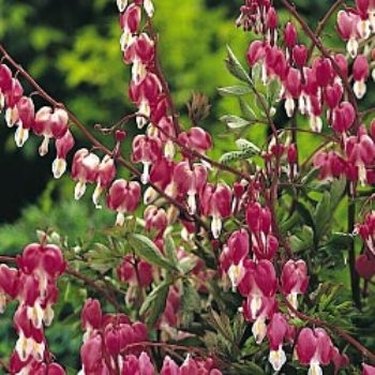
You would like to grow plants and flowers in your yard, but some of the beds are located under pine trees. Not only do these evergreens provide continual shade, the pine needles they drop increases the acidity of the soil. Rather than try to rake up and discard the needles, grow plants that benefit from growing underneath pine trees.
Flowers
Video of the Day
Select flowers that not only thrive in acidic soil, but also need full to partial shade. These include bleeding heart, astilbe, foxglove, bergenia, camellia, hosta, lirope and lily of the valley. Plant these flowers away from the tree's roots to give them room to grow. Or build a raised bed using landscaping timbers, edging stones or other edging material. Build the raised bed deep so the tree's roots are not accidentally damaged by a shovel as you plant flowers.
Video of the Day
Shrubs
Add shrubs that love acidic soil underneath the pines. This include gardenia, azalea, Itea, holly, all types of ferns and cranberry viburnum. Space these shrubs according to their mature size. If it looks sparse, intersperse the shrubs with containers filled with shade-loving flowers.
Test and Amend the Soil
Test the soil under the garden. Pine needles increase the acidity of the soil and extreme acidity damages some plants. Test the soil by taking a sample to your county agriculture extension agency. Alternately, test the soil yourself; soil-testing kits are available at gardening centers and are easy to use.
After testing your soil, amend the pH by adding sulfur. The Garden Helper (see Resources) has recommended amounts of sulfur to increase the acidity, depending upon whether your soil is sandy or not.
Because mature pine trees deplete the moisture in the soil, you might need to add compost, peat moss or mulch to the soil. What you add will depend upon the needs of the plants you choose. Add these amendments several weeks ahead of planting, to allow time for them to affect the soil.